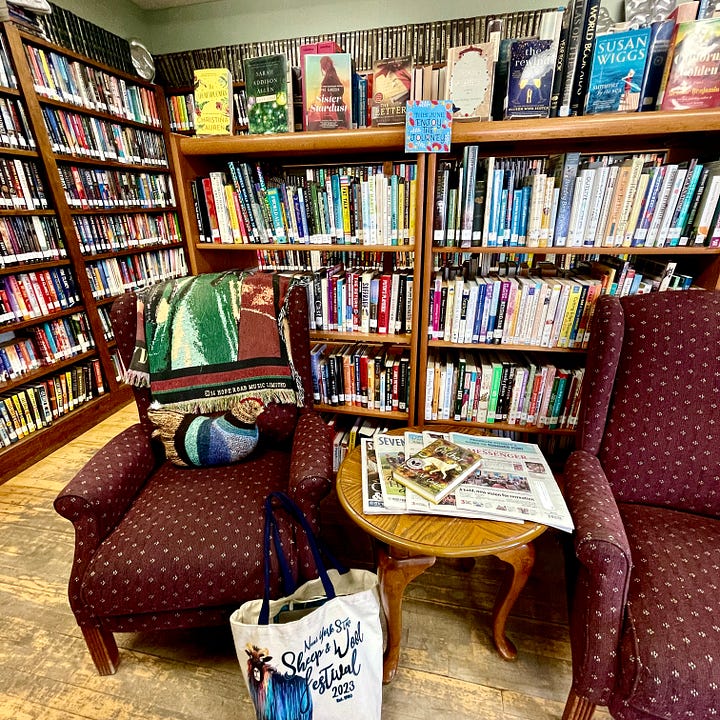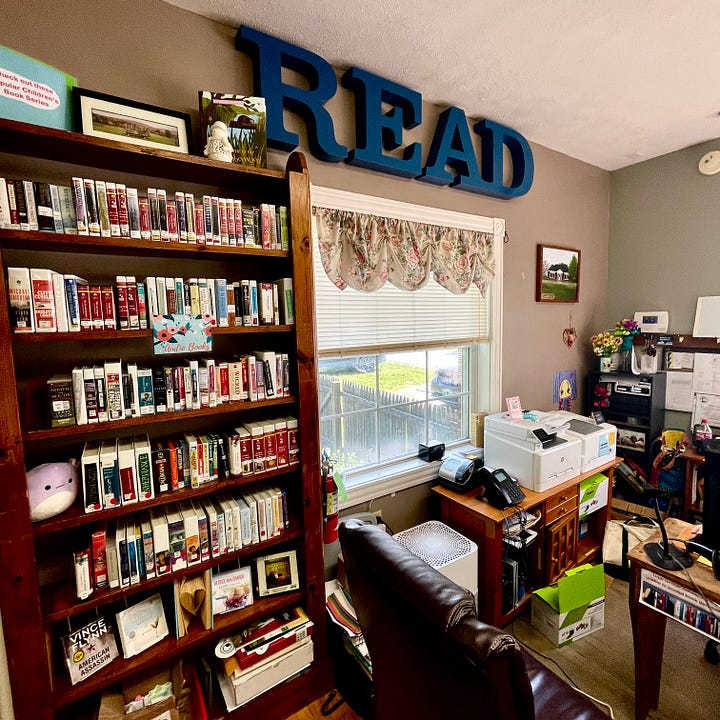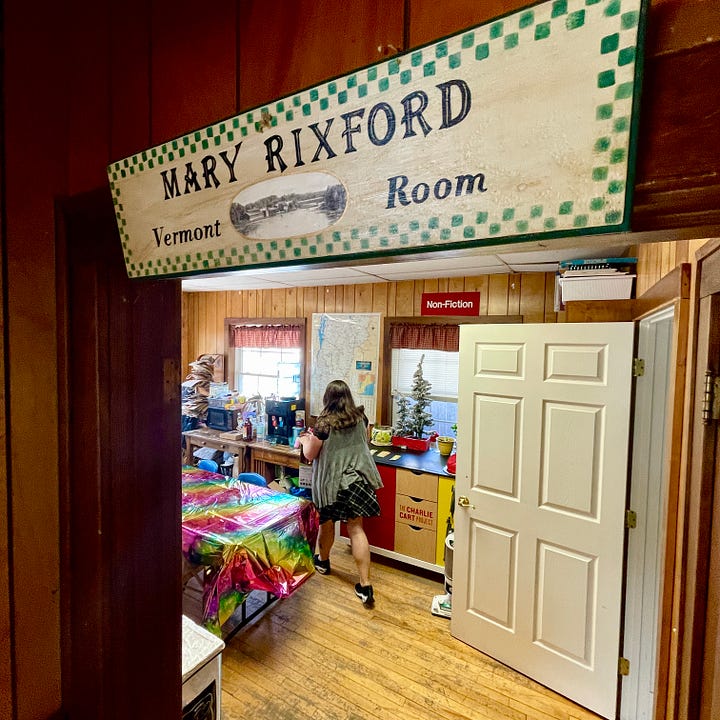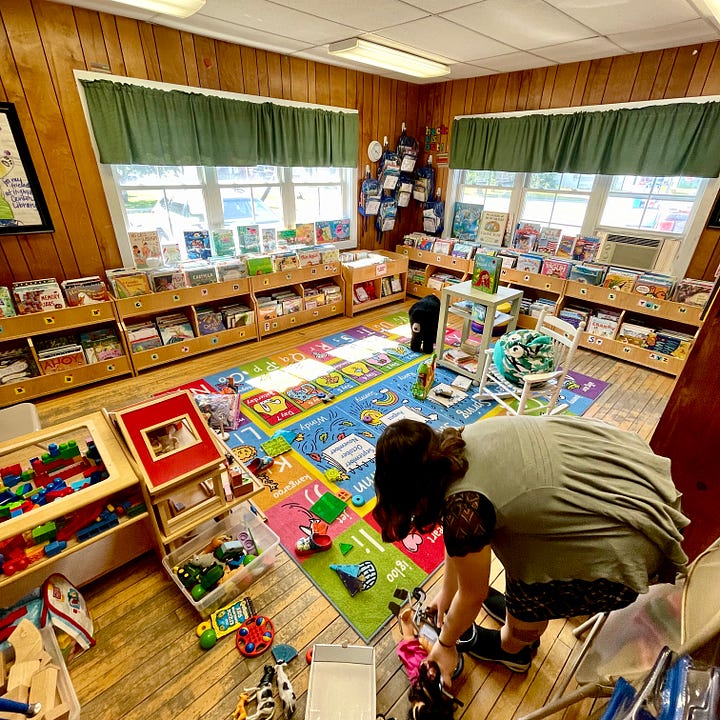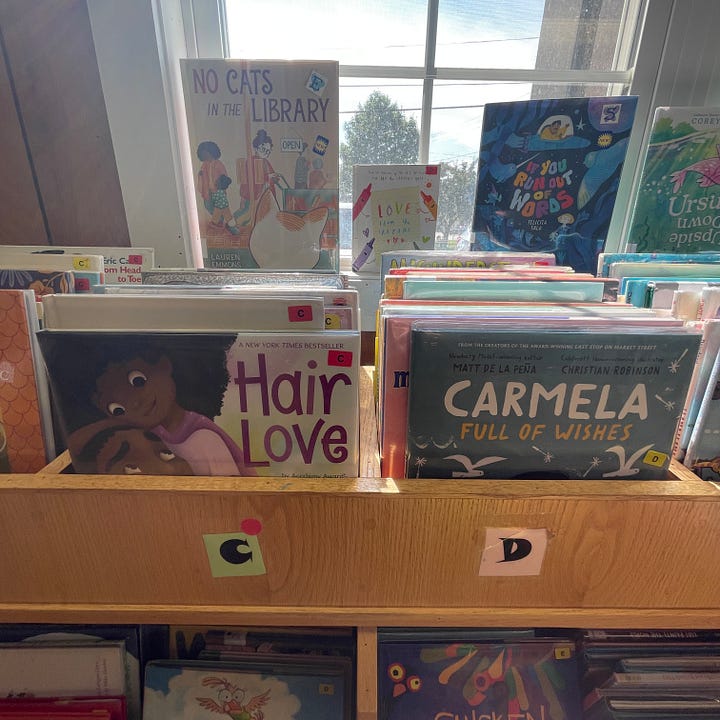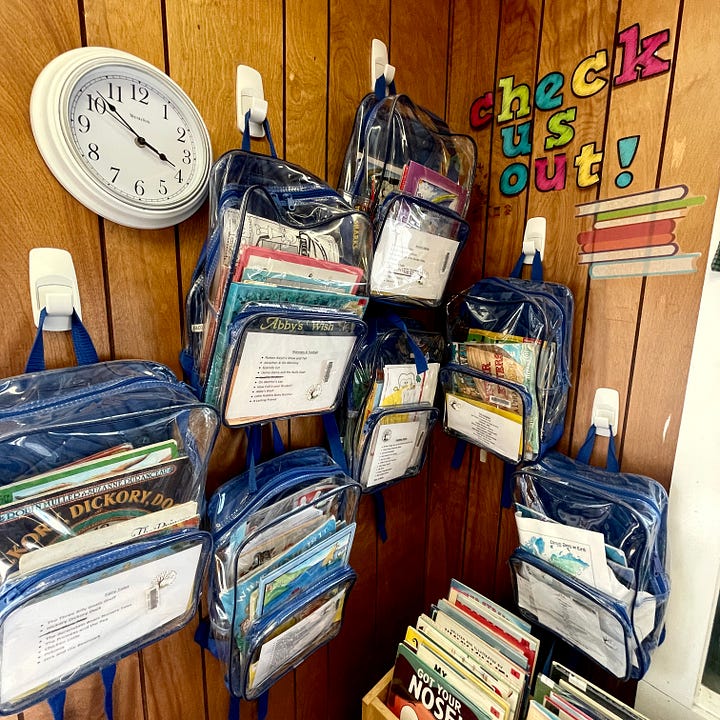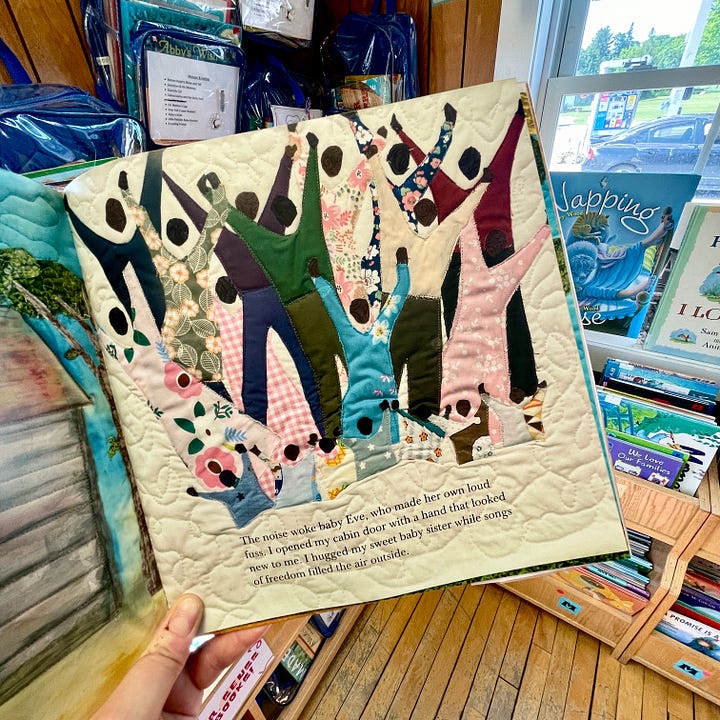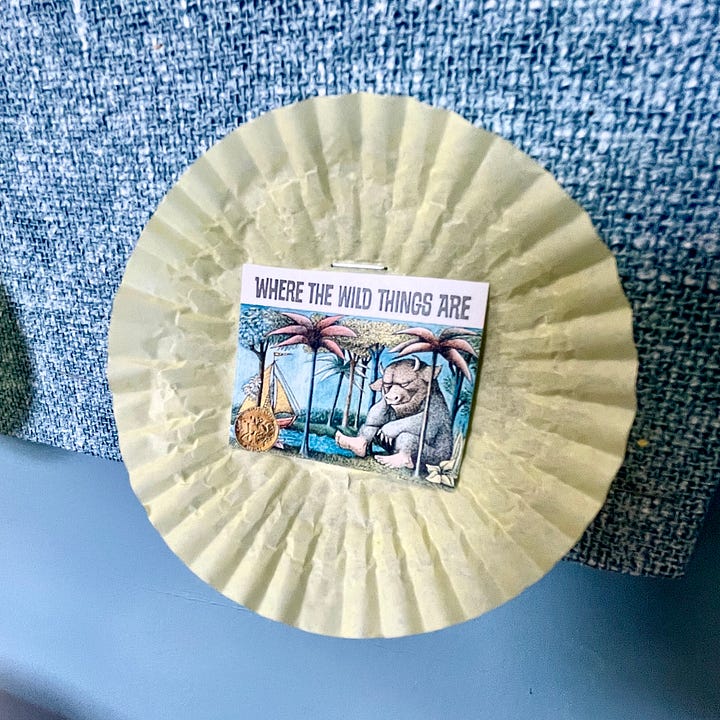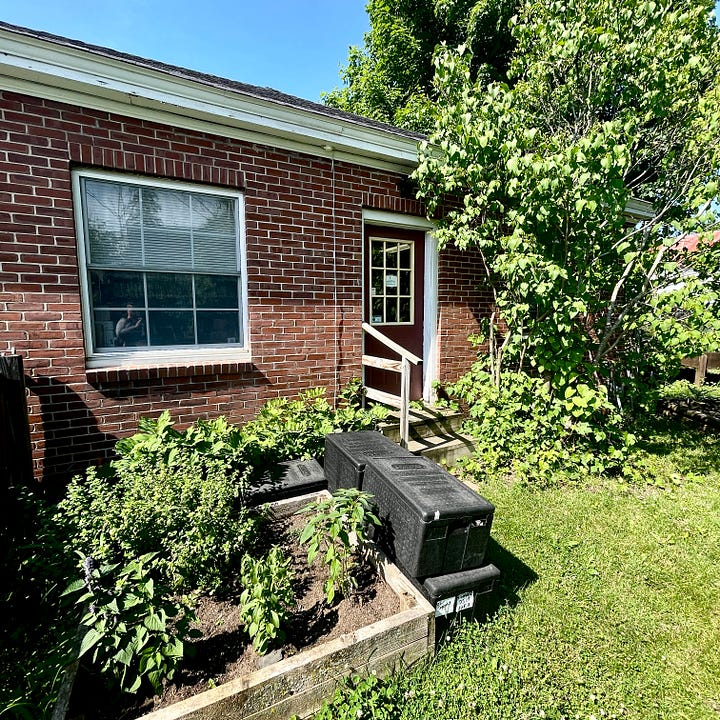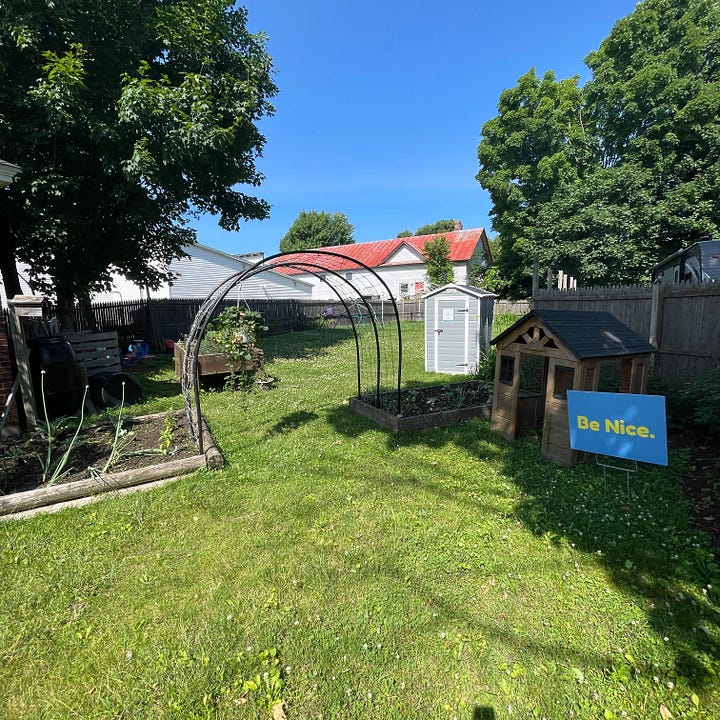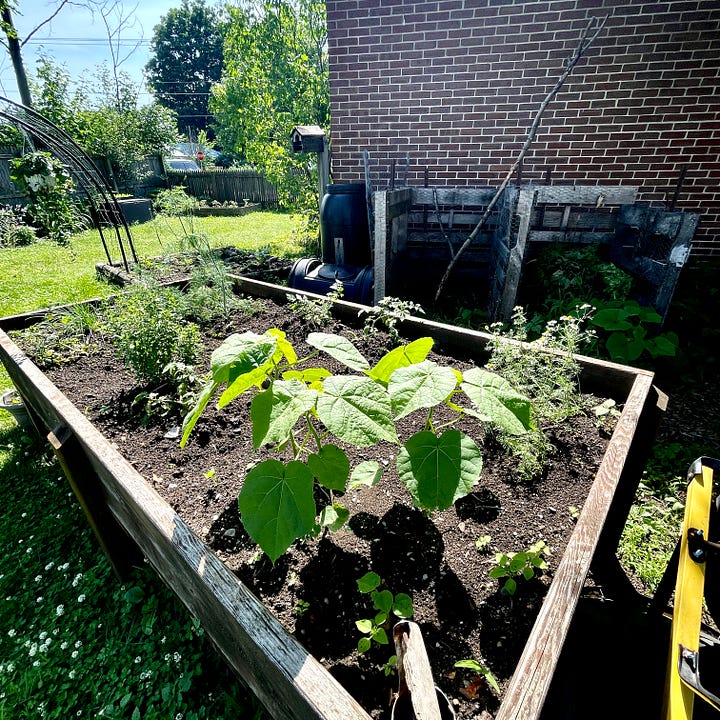Library 93! The Highgate Library & Community Center was the 93rd stop on my quest to read, write, and knit in all of Vermont’s public libraries.
I read: “Gather” by Kenneth Cadow, Chapter 25, and “A Flag for Juneteenth” by Kim Taylor, with illustrations in quilted fabric
I wrote: notes on this library
I knit: a disaster (also, a fingerless mitt)
I got in a fight with my knitting in the Highgate library. Like many knitters, I try to have a project with me at all times that is easy to knit during a conversation. These are my favorite projects. Instructions I love reading in a knitting pattern include: “Knit in the round until you can’t stand it anymore.” Unfortunately, when I entered this friendly library, I was at the place on my fingerless mitt where I should insert waste yarn, do a lot of counting, and split for the fingers. As I tried (in vain) to talk to Judith and read the pattern at the same time, I put a pinky finger where the middle finger should go.
Despite this knitting snafu, I enjoyed talking with a few patrons who were in the mood for storytelling. Judith is a local patron who has lived all over the world. We learned that we have both spent time in Hong Kong; she lived there for two years in the 60s; I spent time there when I lived in Shenzhen in 2001. She gave me instructions on how to get to my next library, and we caravanned part of the way, because it was on her way home. I asked if I could use her name in my post, and she said “Of course. I was always meant to be famous.”
Director Sara emphasized the “community center” in this library’s official title. This is unique; most libraries I have visited serve this function, but not in name. It lived up to its name the day of my visit.
Another patron and storyteller knew Highgate quite well, which borders Canada to the north and The way he told stories suggested that Highgate’s history, at least in his family’s lifetime, was important for him to preserve. Maybe it is important because there are not many people to hear the stories. Despite being surrounded by high-population states, Vermont’s total human population is only 640K. According to a video I just watched (h/t to @stuckinvermont for sharing this), Vermont’s low population is due in part to 1) mountains, 2) a thin layer of rocky soil which limited agriculture, 3) water flowing North to Canada instead of South to Boston which limited trade and commerce, 4) no local Industrial Revolution, and 5) colonial disputes between the French & British.
I am not a historian, but I guess that not many more reasons to move here have emerged since 1791. It’s hard to find a job and it’s expensive to live here. We have a housing shortage. There are black flies and long, dark winters. In 2022, the state set aside $3 million to pay the relocation fees for people to move to Vermont, which as of 2023 has resulted in 165 new Vermonters. After 911, I heard there was a small influx of permanent residents from NYC. During COVID, local lore was that urbanites seeking rural living bought homes sight-unseen in the Northeast Kingdom (a sparsely populated corner of the state), but were upset post-purchase to learn that there was no internet, their road wasn’t plowed in winter, and/or it was hours from a hospital.
So, Vermont remains relatively empty, with a few cows, a few sheep, and more libraries per capita than any other state. We live on dirt roads, we knit, we hike, we read, and we go to libraries to use the internet. And to meet neighbors who can tell us where the cows used to live in Highgate before everything changed.
